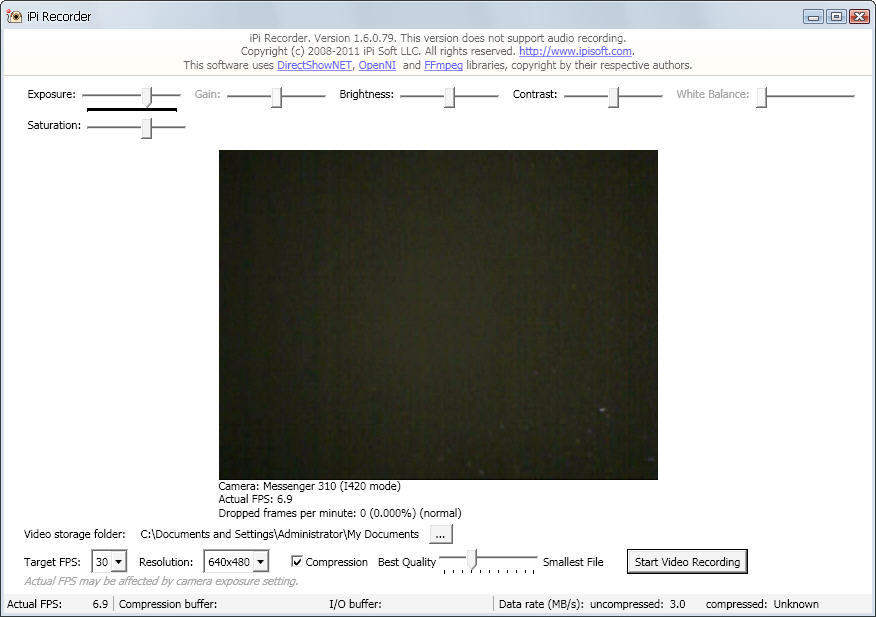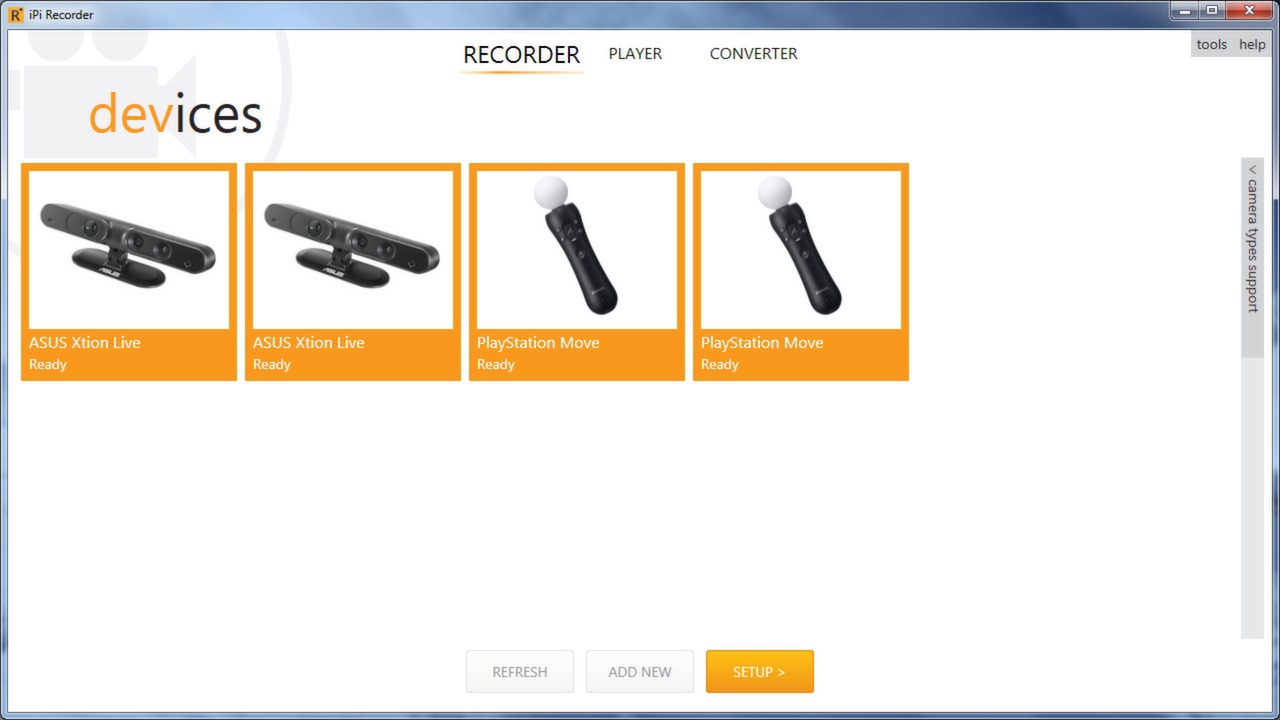- The IPI-T Data Recorder was designed specifically for use in the Instructional Practices Inventory-Technology data collection process. If you are interested in learning more about the IPI Process.
- IPi Recorder is a software program provided by iPi Soft LLC for capturing, playing back and processing video records from multiple cameras and depth sensors. Captured records can be used for motion tracking in iPi Mocap Studio. IPi Recorder supports the following cameras and depth sensors: Sony PlayStation3 Eye (also known as PS Eye).
- IPi Recorder is a utility for recording multi-camera video. It works with DirectShow-compatible Web cams (USB and FireWire). User can select desired codec and resolution.
How does the international prognostic index (IPI) score calculator for lymphoma prognosis work?
This health tool presents the IPI and revised IPI scores in order to help the outcome prognosis of patients with aggressive non-Hodgkin’s lymphoma.
IPi Recorder Shows pairing procedure for PlayStation Move motion controller in iPi Recorder (Windows 7). You will need Bluetooth adapter and mini-USB cord.

Developed in 1993 to accurately predict survival outcomes, the 2031 patient clinical trial involved a sample of patients of different ages, diagnosed with aggressive NHL and who were treated with a doxorubicin-based chemotherapy regimen such as CHOP 10 to 6 years before the study.

The five risk factors taken into account in the IPI score calculator for lymphoma prognosis are:
Ipi Recorder 4

■ Age greater than 60 years;
■ Stage III or IV disease (according to the Ann Arbor staging system);
■ Elevated serum lactate dehidrogenase;
■ ECOG performance status of 2 – 4;
■ Two or more extranodal sites of disease.
Each present risk factors adds one point to the overall score. All possible results and their survival rates can be found in the table below.
| IPI score | Risk group | 5-year survival | 5-year survival according to PTCL* | 3-year survival according to CDBCL* |
| 0 - 1 | Low | 73% | 91% | 50% |
| 2 | Low - intermediate | 51% | 81% | 33% |
| 3 | High - intermediate | 43% | 65% | 16% |
| 4 - 5 | High | 26% | 59% | 11% |
*Where PTCL refers to the International Peripheral T-cell Lymphoma Project and CDBCL refers to the CD20+ B-cell lymphoma study in reference no. 3.
Motion Capture Free Download
One of the criticisms received by the model concerns the fact that its was developed before the introduction of rituximab therapy which is now included in the standard therapeutic management of B-cell lymphomas.
The new therapy has significantly improved outcomes of lymphoma patients but its effect on IPI has not been evaluated entirely.
There is also an age-adjusted IPI for use in clinical trials. This derived method takes out the age and extranodal site factors from the original IPI under the assumption that the patients compared are within the same age group, either below or over 60.
The three factors which remain in the age-adjusted version are the malignancy stage, LDH and performance status.

The table below introduces the correlation between the adjusted scores and predicted survival:
| IPI score | Risk group | 5-year survival |
| 0 | Low | 83% |
| 1 | Low - intermediate | 69% |
| 2 | High - intermediate | 46% |
| 3 | High | 32% |
Revised international prognostic index (rIPI)
The study cited in reference no. 3 suggests that the IPI remains a valid predictor outcome in patients with aggressive B-cell lymphoma under therapy with a combination of rituximab and CHOP.

However, a new revised version of IPI has been build and consists of the following changes:
■ One change of risk factor – ECOG performance scale 3 or greater (the original IPI factor was ECOG 2 or greater).
■ Change of risk classification scale – The new scale has the following groups: good, intermediate and poor while the original study was low, low – intermediate, high – intermediate and high.
■ Change in survival rates – the Revised version accounts for the 4-year progression free survival, compared to the 5-year median survival in the IPI.
| Revised IPI score | Risk group | 4-year progression free survival |
| 0 | Good | 94% |
| 1 - 2 | Intermediate | 80% |
| 3 - 5 | Poor | 53% |
Along the internal prognostic index, there are other survival stratificiation tools addressed to lymphoma conditions such as the FLIPI score for follicular lymphoma or the MIPI score for mantle cell lymphoma.
References
1) (1993) A predictive model for aggressive non-Hodgkin's lymphoma. The International Non-Hodgkin's Lymphoma Prognostic Factors Project. N Engl J Med; 329(14):987-94.
2) Weisenburger DD, Savage KJ, Harris NL, Gascoyne RD, Jaffe ES, MacLennan KA, Rüdiger T, Pileri S, Nakamura S, Nathwani B, Campo E, Berger F, Coiffier B, Kim WS, Holte H, Federico M, Au WY, Tobinai K, Armitage JO, Vose JM; International Peripheral T-cell Lymphoma Project. (2011) Peripheral T-cell lymphoma, not otherwise specified: a report of 340 cases from the International Peripheral T-cell Lymphoma Project. Blood; 117(12):3402-8.
3) Ziepert M, Hasenclever D, Kuhnt E, Glass B, Schmitz N, Pfreundschuh M, Loeffler M. (2010) Standard International prognostic index remains a valid predictor of outcome for patients with aggressive CD20+ B-cell lymphoma in the rituximab era. J Clin Oncol; 28(14):2373-80.
Ipi Recorder 2 Download
4) Geisler CH, et al. (2010) The Mantle Cell Lymphoma International Prognostic Index (MIPI) is superior to the International Prognostic Index (IPI) in predicting survival following intensive first-line immunochemotherapy and autologous stem cell transplantation (ASCT). Blood; 115:1530–3.
5) Sehn LH, Berry B, Chhanabhai M, Fitzgerald C, Gill K, Hoskins P, Klasa R, Savage KJ, Shenkier T, Sutherland J, Gascoyne RD, Connors JM. (2007) The revised International Prognostic Index (R-IPI) is a better predictor of outcome than the standard IPI for patients with diffuse large B-cell lymphoma treated with R-CHOP. Blood; 109(5):1857-61.
6) Todorovic M, Balint B, Andjelic B, Stanisavljevic D, Kurtovic NK, Radisavljevic Z, Mihaljevic B. (2012) Outcome prediction of advanced mantle cell lymphoma by international prognostic index versus different mantle cell lymphoma indexes: one institution study. Medical Oncology; (29)3, pp 2212–2219.
Ip Recorder
01 Sep, 2016